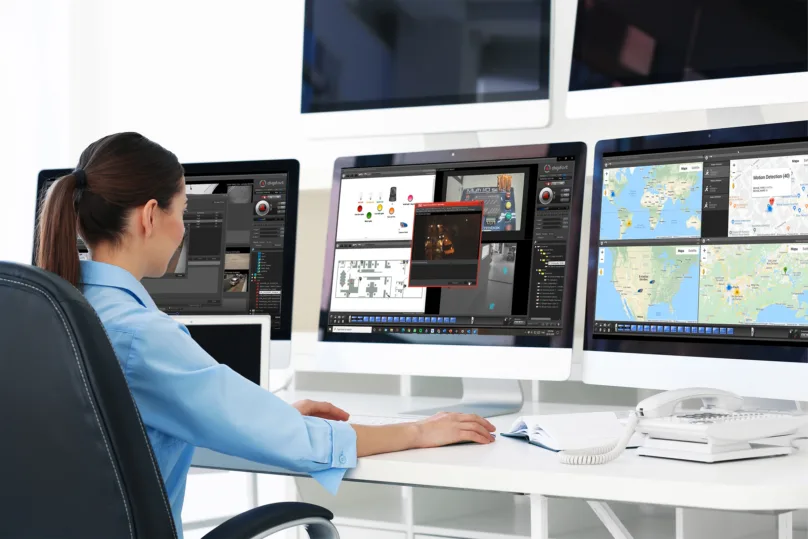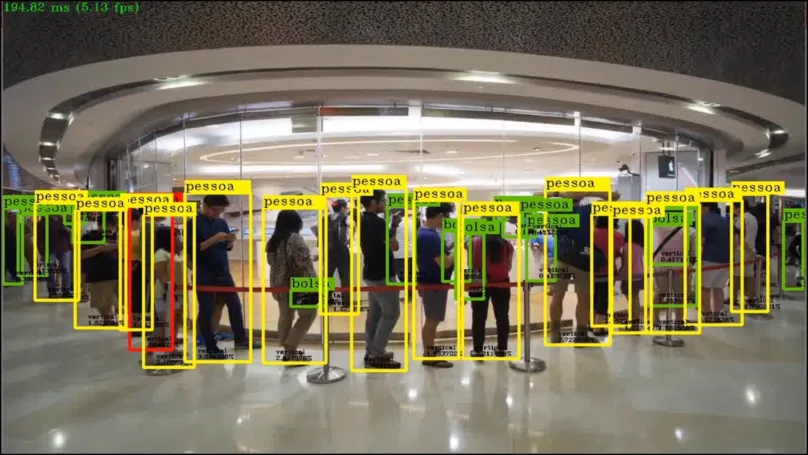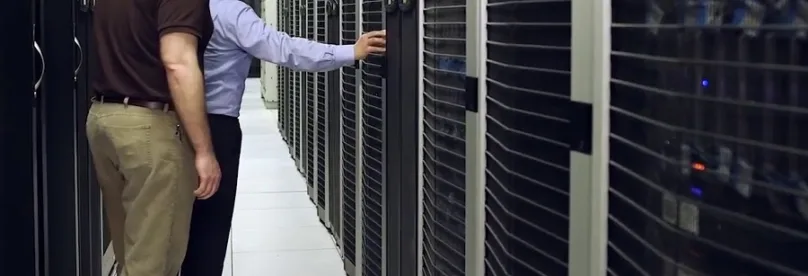
Failover and PSU
Failover Resilience
VMS-based CCTV systems use servers for recording and control. Even in a basic VMS system, these provide significantly higher levels of failure protection than those systems using NVRs and DVRs. This level of resilience is appropriate for many high-security CCTV systems, however, for mission-critical applications, server failover provides even higher levels of protection and continuity.
The principles of failover are straightforward. If any live server in a CCTV system fails, the CCTV system must recognize the failure has occurred and automatically trigger a standby, ‘redundant’ server, device or system to take over. Speed is of the essence. Quick failover reduces server down time and data loss.
The server failover aspect is only part of an effective, resilient, CCTV system design. The network infrastructure must have equal levels of resilience, offering multiple routes between network switches and CCTV system devices, should the primary network route fail. Measures to ensure power is maintained must also be taken.
The selection of VMS is important with failover, as it is this which ensures comprehensive system operation is maintained, post failure. A tier 1 VMS will include the following in failover:
- Live and remote client viewing options.
- Playback functionality.
- All system configurations, including event handling.
One-to-one failover
The highest level of server failover is one-to-one, where video recording is duplicated on the live server and a “partner” server of similar specification. The partner server is in constant operation to allow the fastest possible failover response and to avoid potential data loss. It is an expensive option, with 100% server redundancy - a complete duplication of servers. However, it provides very high levels of resilience, minimal data loss and maintains system operation at all times.

Spread servers failover
A cost-saving alternative is ‘spread servers’ where, instead of a ‘one-to-one’ server ratio we have ‘one to many’. Here, any one of several live servers can fail to just one, redundant failover server – remembering all the servers still have RAID5 storage and RAID1 OS. For example, in a 5:1 ratio, any one of the five live servers could failover – just not all at once. Spread server architecture is cheaper than one-to-one, as the redundancy is less (in this case 20%), but it still brings many benefits. The IT architecture logic applied is that it would be highly unlikely that more than one live server would fail simultaneously.
However, it is a risk vs cost, budget decision offering lower levels of site continuity and resilience than one-to-one, but far better than no failover at all.
Critical camera failover
Some VMS solutions offer critical camera failover, where only critical cameras failover to the spare, redundant server. These cameras can be from more than one live server, allowing security managers to proritise the importance of each camera in the CCTV system. With the same level of redundancy and cost as the spread server architecture described above, security managers could instead designate which cameras are critical, redirecting their recording path to the redundant server on failure.
Unlike spread servers, in this design, all live servers could fail and still the critical cameras would operate.

Parallel recording
In applications where there is a real threat from attack and the data is critical, ‘parallel recording’ is an option. It is not really a ‘failover’ method, because the entire system is duplicated in different locations and operates entirely separately, but in parallel. Should an attack occur, such as an explosion destroying one of the VMS recording locations, recording continues at the second location – assuming appropriate power back up and network design.
This is an expensive option, as the entire recording facility is duplicated. However, its prime advantage is that recorded footage is available from before, during and after a catastrophic event, except from those cameras which may also be lost in the attack. In mission-critical and high-threat applications, parallel recording maximises site continuity and always maintains some level of site visibility and control.

Power failover
A sudden power outage can damage servers in a CCTV system, in particular the storage hard drives. Loss of power to servers is easily addressed, using uninterrupted power supplies (UPS), which is good practice and recommended for any servers in any configuration. UPS not only allows the servers and other network devices to shut down cleanly if power is lost altogether and recover completely when power is restored but also protects the servers against damage from mains power spikes. Dual redundant PSUs in servers can also be specified, where if the primary PSU fails a spare takes over. Switching is quick and alerts can be configured within the VMS to notify the system administrator that a problem has occurred, and a repair is required.
VMS Co. servers can be deployed using different levels of resilience and budgets, proportional to their critical nature, using robust, failover server architecture. This ensures that security, process and operational control of a site are maintained and camera, power supply, storage, server and network failure are mitigated, even when the threat is malicious or catastrophic.
Redundant PSU - Single or Dual PSU
VMS Co. offers single or dual (redundant) PSU (power supply unit) options. A dual redundant power supply ensures server power is maintained, should the first PSU fail second redundant PSU takes over, providing a higher level of resilience than a single PSU option.